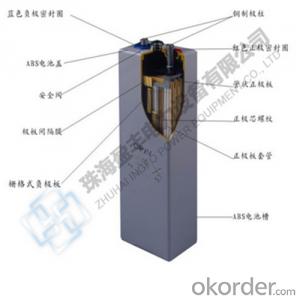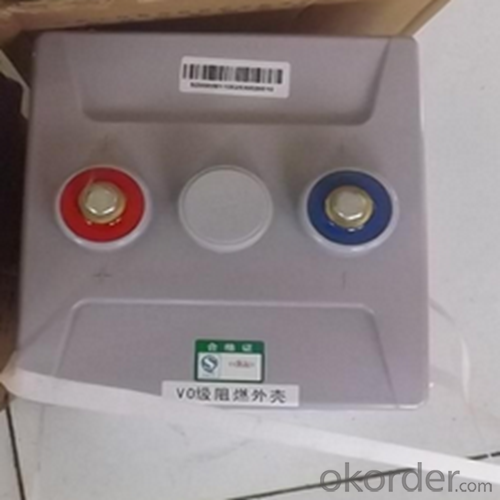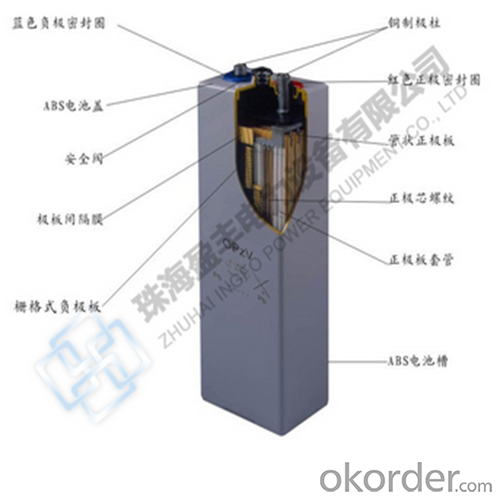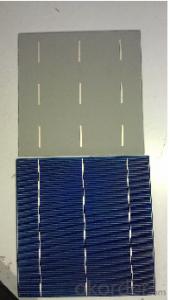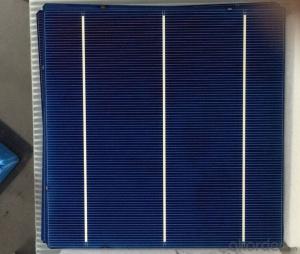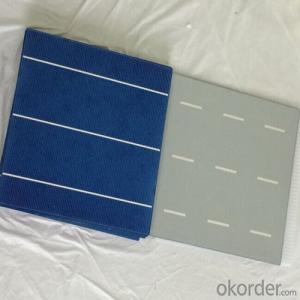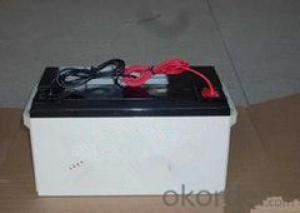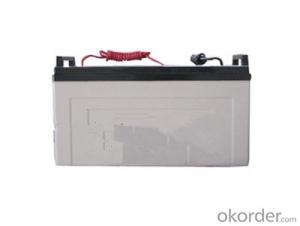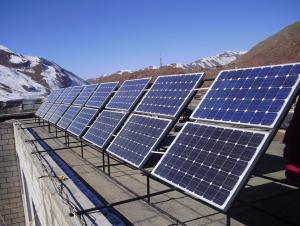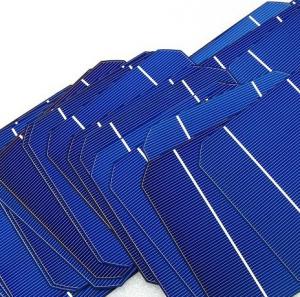Novel Solar Cells Compatible OPZV Tubular Battery 2V 500/600/800/1000/1500AH
- Loading Port:
- China main port
- Payment Terms:
- TT OR LC
- Min Order Qty:
- 1 pc
- Supply Capability:
- 100000 pc/month
OKorder Service Pledge
OKorder Financial Service
You Might Also Like
Structure of Product Description
What is the product?
· Precision explosion relief valve shall be adopted
· Advanced wrapping technology and assembly technology
· Designed life is fifteen years,excellent performance of battery in low temperature and superiority in consistence and stability
· Can be used at vertical or horizontal orientation
· Balanced design for both floating and cyclic operation
· Low self-discharge rate and long shelf life
· Connecting terminal adopts stainless steel bolt,thus it has the characteristics of high strength and non-deforming
· Design with patented corrosion resisting alloy and thickened plate
What is the purpose of the product?
· Data Centre (High Rate UPS)
· Telecommunication
· Banks & Financial Centre
· Hospital& Testing Laboratories
· Power Generation Plants
· High Power Backup Supply
· Design with patented corrosion resisting alloy and thickened plate
What advantages do the product have ?
· Stable quality&high reliability
· Sealed construction
· Environmentally friendly
· Maintenance-free operation
· Low pressure venting system
· Heavy duty grid
· Low self discharge
Main feature of the product?
*safety and reliable
*environmental friendly and fast delivery
*low self diacharge
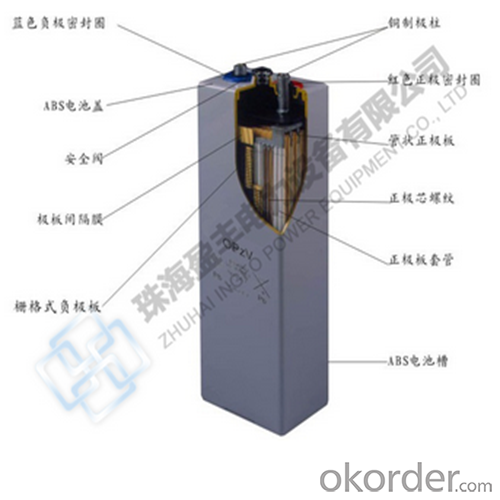
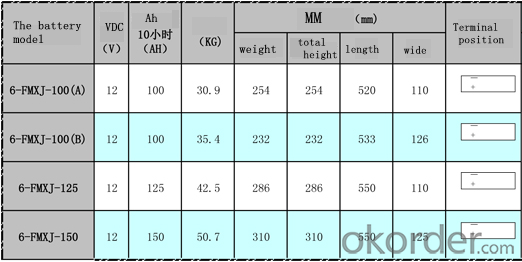
FAQ:
*Question:How long does it can service?
Answer:The service life of it in more than a decade.
*Question:What’s price per watt?
Answer: It’s depends on the quantity, delivery date and payment terms of the order. We can talk further about the detail price issue. Our products is high quality with lower price level.
*Question:Can you tell me the parameter of your solar panels?
Answer:We have different series of cells with different power output, both from c-si to a-si. Please take our specification sheet for your reference.
- Q: Can solar cells be used to power remote monitoring systems?
- Yes, solar cells can be used to power remote monitoring systems. Solar cells convert sunlight into electricity, providing a reliable and sustainable source of power for monitoring devices located in remote or off-grid areas where traditional power sources are not available or feasible. This makes solar cells an ideal solution for powering remote monitoring systems.
- Q: Can solar cells be used to power emergency lighting systems?
- Yes, solar cells can be used to power emergency lighting systems. Solar cells convert sunlight into electricity, which can be stored in batteries for later use. This makes them a reliable and sustainable source of power for emergency lighting, ensuring that they will continue to function even during power outages or other emergencies.
- Q: Can solar cells be used to power remote transportation systems?
- Yes, solar cells can be used to power remote transportation systems. Solar cells are a reliable and sustainable source of renewable energy that can be installed on vehicles or infrastructure to provide power for electric motors, batteries, or other components. This allows remote transportation systems such as electric cars, boats, or drones to operate efficiently without relying on fossil fuels or traditional power grids, making them more environmentally friendly and cost-effective in remote areas.
- Q: Can solar cells be used for powering water pumps?
- Yes, solar cells can be used for powering water pumps. Solar-powered water pumping systems utilize photovoltaic cells to convert sunlight into electricity, which can then be used to power water pumps. These systems are environmentally friendly, cost-effective, and reliable, making them a popular choice for remote areas or locations where grid electricity is not available.
- Q: How do solar cells impact carbon emissions?
- Solar cells have a significant positive impact on carbon emissions as they generate electricity without producing any greenhouse gas emissions. By harnessing the sun's energy, solar cells reduce our reliance on fossil fuels for power generation, ultimately helping to mitigate climate change and reduce carbon emissions.
- Q: Which Solar Panel Type is best? Polycrystalline panel or PV Module Monocrystalline Solar cell panel, or thin film?
- PV Module Monocrystalline Solar cell panels is most efficient since they are made from the highest-grade silicon.
- Q: Can solar cells be used for powering remote mining operations?
- Yes, solar cells can be used for powering remote mining operations. Solar power is a viable and sustainable energy source that can be harnessed in remote areas where access to traditional electricity grids is limited or non-existent. Installing solar panels at mining sites can provide a reliable and cost-effective source of power for various operations such as machinery, lighting, and communication systems. Additionally, solar power reduces dependence on fossil fuels, minimizing environmental impact and promoting clean energy solutions.
- Q: How do solar cells impact national energy policies?
- Solar cells have a significant impact on national energy policies as they promote renewable energy and reduce reliance on fossil fuels. Governments often incentivize the adoption of solar cells through policies such as tax credits, feed-in tariffs, and net metering, which encourage their installation and use. This helps diversify the energy mix, reduce greenhouse gas emissions, and enhance energy security, ultimately leading to a more sustainable and resilient national energy system.
- Q: Can solar cells be used for powering remote research stations in Antarctica?
- Yes, solar cells can be used for powering remote research stations in Antarctica. They provide a reliable and sustainable source of energy in a region where sunlight is available for a significant portion of the year. Solar panels can be installed to capture sunlight and convert it into electricity, allowing for the operation of essential equipment and facilities in these remote locations without relying on traditional fossil fuel-based generators.
- Q: How is the solar cells factories working in China? Do they follow certain quality standards?
- I know many good solar cell suppliers all over the world, and they are purchasing their solar cells product in China more and more.
Send your message to us
Novel Solar Cells Compatible OPZV Tubular Battery 2V 500/600/800/1000/1500AH
- Loading Port:
- China main port
- Payment Terms:
- TT OR LC
- Min Order Qty:
- 1 pc
- Supply Capability:
- 100000 pc/month
OKorder Service Pledge
OKorder Financial Service
Similar products
Hot products
Hot Searches
Related keywords

